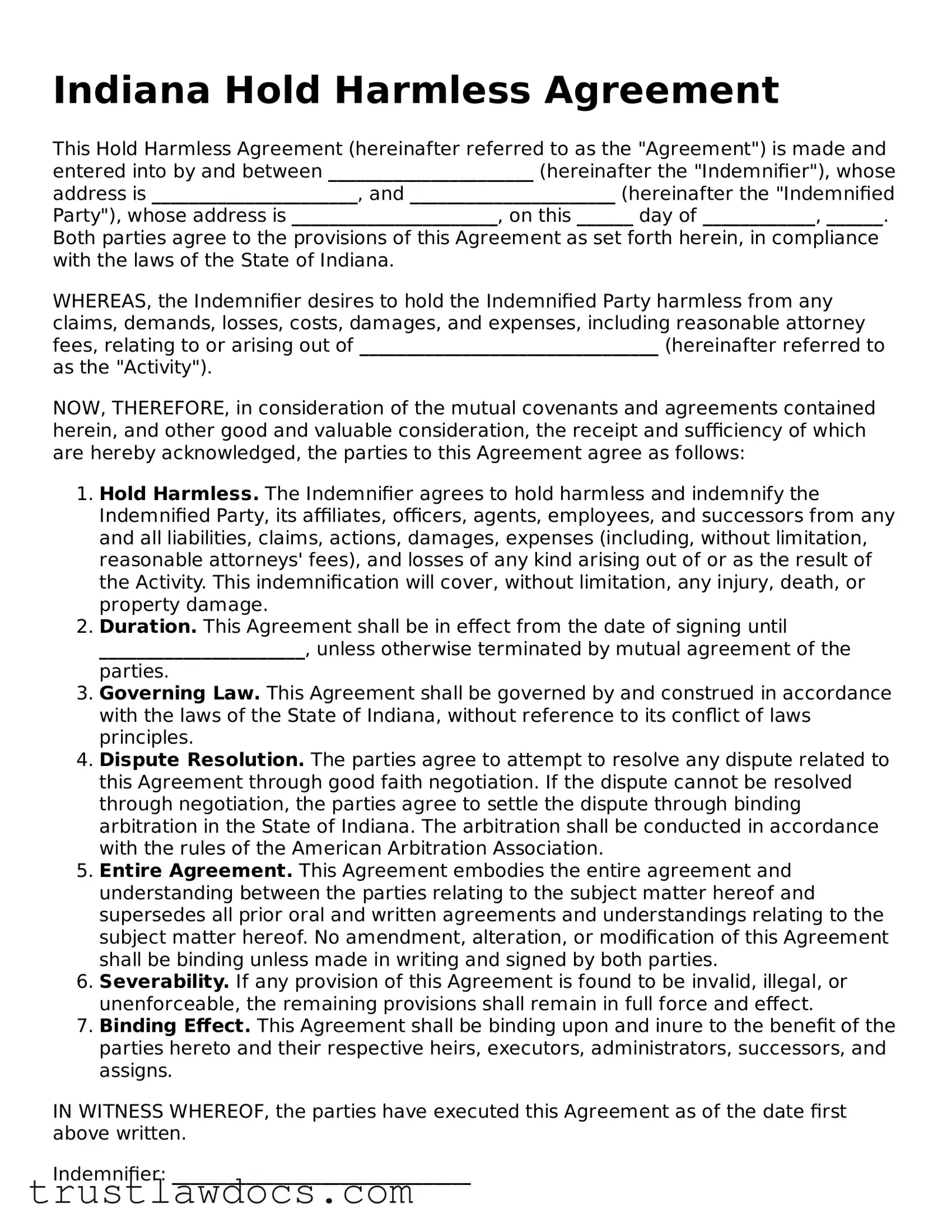Indiana Hold Harmless Agreement
This Hold Harmless Agreement (hereinafter referred to as the "Agreement") is made and entered into by and between ______________________ (hereinafter the "Indemnifier"), whose address is ______________________, and ______________________ (hereinafter the "Indemnified Party"), whose address is ______________________, on this ______ day of ____________, ______. Both parties agree to the provisions of this Agreement as set forth herein, in compliance with the laws of the State of Indiana.
WHEREAS, the Indemnifier desires to hold the Indemnified Party harmless from any claims, demands, losses, costs, damages, and expenses, including reasonable attorney fees, relating to or arising out of ________________________________ (hereinafter referred to as the "Activity").
NOW, THEREFORE, in consideration of the mutual covenants and agreements contained herein, and other good and valuable consideration, the receipt and sufficiency of which are hereby acknowledged, the parties to this Agreement agree as follows:
- Hold Harmless. The Indemnifier agrees to hold harmless and indemnify the Indemnified Party, its affiliates, officers, agents, employees, and successors from any and all liabilities, claims, actions, damages, expenses (including, without limitation, reasonable attorneys' fees), and losses of any kind arising out of or as the result of the Activity. This indemnification will cover, without limitation, any injury, death, or property damage.
- Duration. This Agreement shall be in effect from the date of signing until ______________________, unless otherwise terminated by mutual agreement of the parties.
- Governing Law. This Agreement shall be governed by and construed in accordance with the laws of the State of Indiana, without reference to its conflict of laws principles.
- Dispute Resolution. The parties agree to attempt to resolve any dispute related to this Agreement through good faith negotiation. If the dispute cannot be resolved through negotiation, the parties agree to settle the dispute through binding arbitration in the State of Indiana. The arbitration shall be conducted in accordance with the rules of the American Arbitration Association.
- Entire Agreement. This Agreement embodies the entire agreement and understanding between the parties relating to the subject matter hereof and supersedes all prior oral and written agreements and understandings relating to the subject matter hereof. No amendment, alteration, or modification of this Agreement shall be binding unless made in writing and signed by both parties.
- Severability. If any provision of this Agreement is found to be invalid, illegal, or unenforceable, the remaining provisions shall remain in full force and effect.
- Binding Effect. This Agreement shall be binding upon and inure to the benefit of the parties hereto and their respective heirs, executors, administrators, successors, and assigns.
IN WITNESS WHEREOF, the parties have executed this Agreement as of the date first above written.
Indemnifier: ________________________________
Indemnified Party: ________________________________
